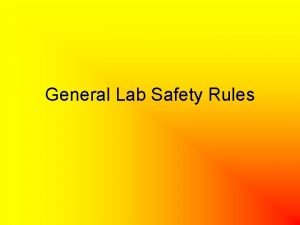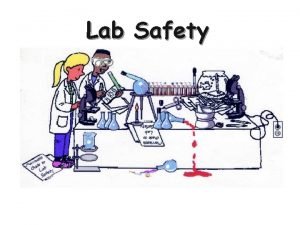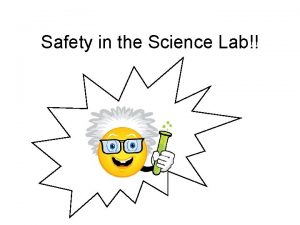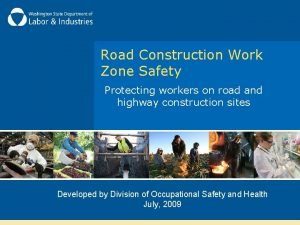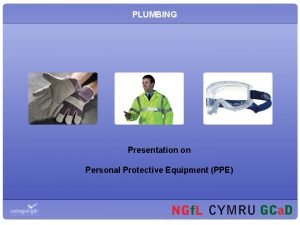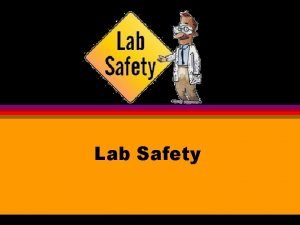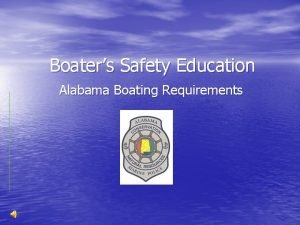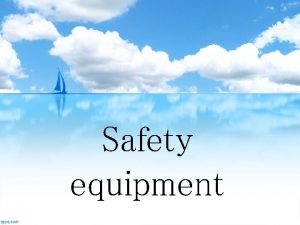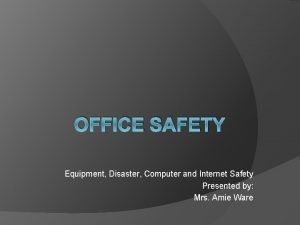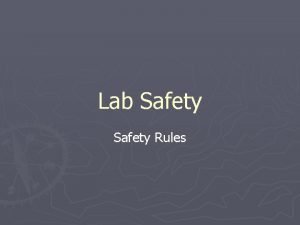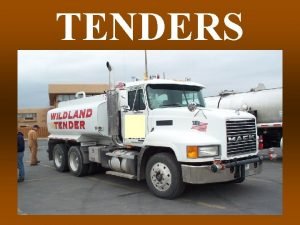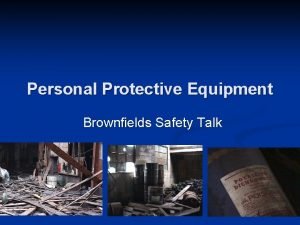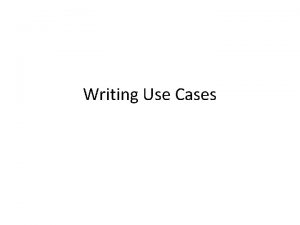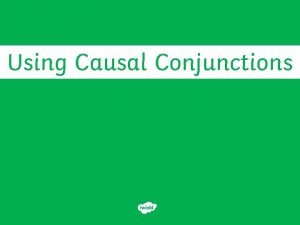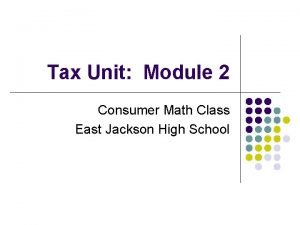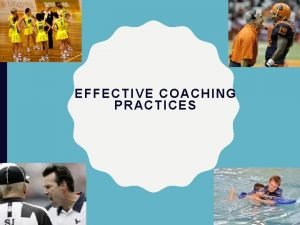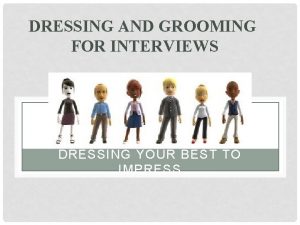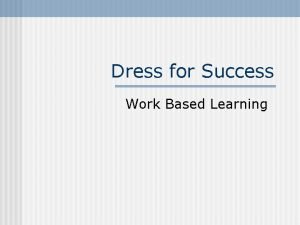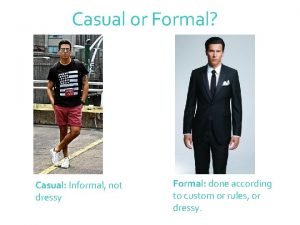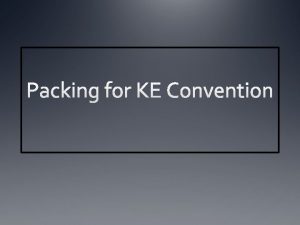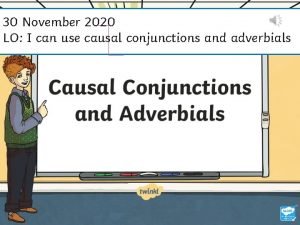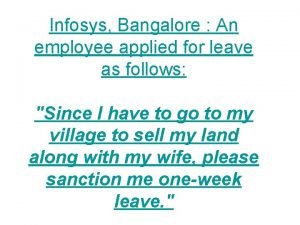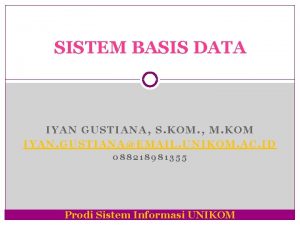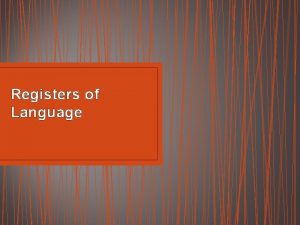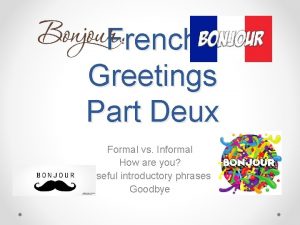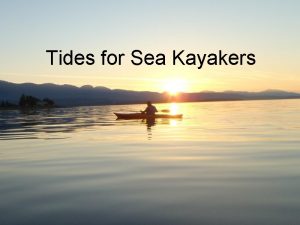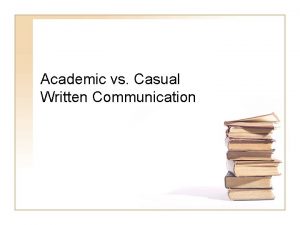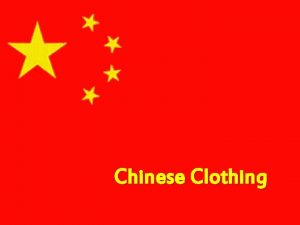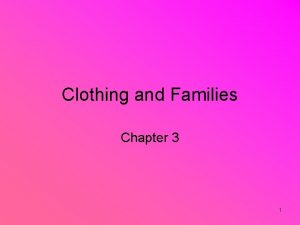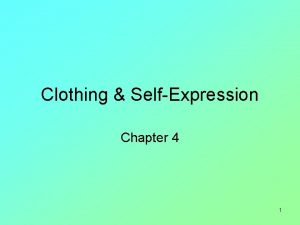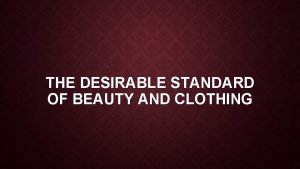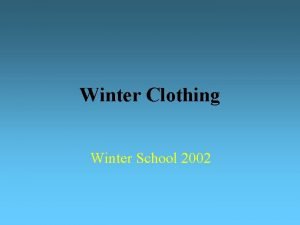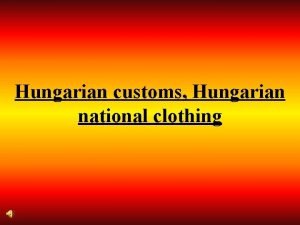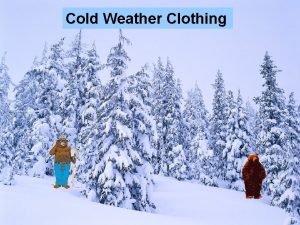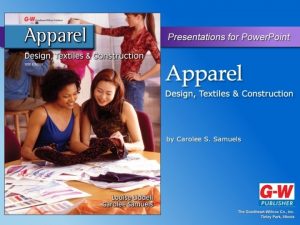Casual Kayakers Casual Kayakers Overview Safety Equipment Clothing











































- Slides: 43

Casual Kayakers

Casual Kayakers

Overview ØSafety ØEquipment ØClothing

Who is more likely to have a serious accident?

A Few Boring Statistics Ø 70% of all fatal boating accident victims drowned, and of those, 84% were not wearing a life jacket. Ø 8 out of every 10 boaters who drowned were using vessels less than 21 feet in length. Source: USCG 2011 Recreational Boating Accident Statistics

Vessel Types with Top Casualty Numbers Casualty Other Type of Boat Drownings Rank Deaths Total Injuries Total Casualties 1 Open Motorboat 253 121 374 1610 1984 2 Personal Watercraft 18 26 44 764 808 3 Cabin Motorboat 24 23 47 277 324 118 16 134 116 250 21 11 32 87 119 4 5 Canoe/Kayak Pontoon Source: USCG 2011 Recreational Boating Accident Statistics

Don’t be next! March 2012 Outside Air Temp: 81 Degrees Water Temp: 37 Degrees

Best Safety Attributes • Common Sense • Good Judgement • Honesty with Yourself

Rules 1 & 2 #1 Rule: Wear your PFD! #2 Rule: WEAR YOUR PFD!

#3 - Dress for Immersion Everyone Capsizes…it’s not a matter of “if”, it’s a matter of “when”

A Basic Guideline Air Temp: 50 + Water Temp: 60 = less than 130 You should dress with protective clothing * Anytime the water is 55 degrees or below, you should dress in protective clothing

Good Judgement/Common Sense – Know the weather forecast and expected local conditions – Know the abilities/capabilities of the people you are paddling with – BE HONEST WITH YOURSELF ABOUT YOUR OWN ABILITIES

Technique • Kayaking is safer and more fun if you have basic skills – Self and assisted rescue – Basic strokes • Don’t be too shy to participate in lessons or skill sessions

Practice • Practice what your learn everytime you paddle…perfect your technique

Equipment

Minimally Equipped

Well Equipped

Everything in Dry Bags

Kayaks • Choose a kayak for the “type” of paddling you do now……and plan to do in near future!

Key Features All Kayaks Need • Water tight compartments or floatation • Deck lines – front and back deck (bungees are NOT decklines) • Grab handles – Front and rear

Nice To Have Features • Comfortable seat with low back brace • Good arrangement of deck bungees • Rudder or Skeg

Kayaks • Sea Kayaks: 14 - 20 ft • Touring: 12 -14 ft

Kayaks Recreational: 8 -12 ft

Kayaks Sit-On-Top: 8 – 16 ft

Kayak Floatation Commercial Bags • Come in variety of sizes • $50 -$70 a set Styrofoam Pool Noodles Come in lots of colors! About $1 - $1. 50 each

PFD’s Type III Inflatable Type V Rescue

PFD Key Features • Comfortable to wear • Does not “ride up” in the water • Adjustment straps at the waist, sides, and shoulders • Meets your needs as a paddler (pockets, etc. ) • Meets USCG standards

PFD’s

Paddle’s Euro Paddles $75 - $500 Greenland Paddles $125 - $550

Euro Paddles What type is right for you? High Angle Low Angle

Paddles - Pricing Carbon Fiber • Extremely light weight • Durable • Expensive $300 -$500 Fiberglass • Fairly lightweight, but not like Carbon • Extremely durable • Usually have a carbon or lightweight shaft • Mid-range prices $200 -$275 Plastic • Very heavy, usually heavy metal shaft • Blades is not usually rigid • Inexpensive $50 -$100

Paddle Length • Depends on your style of paddling – High Angle (205 cm – 220 cm) – Low Angle (210 cm – 230 cm) • Go as short as you are comfortable • Don’t buy a paddle over 230 cm – it’s too long for any paddler

Draw Stroke

Clothing

Dress for Immersion

Clothing Basics Good • Base Layers • Quick Drying • Moisture Wicking • Smartwool, Poly. Pro, Silk, Nylon/Spandex • Can Be Layered • Provides warmth when wet • Outerwear • Waterproof/Windproof • Protection From Cold Water • Gore-Tex, Neoprene Bad • Base/Outerwe ar • Slow Drying • Moisture Absorbing • Cotton, Denim, Street Clothes in General • Definite No’s • Street Clothes • Sandals/Krocs • Shorts/Pants with Big Cargo Pockets/Cords

NO…. . NO

Clothing Basics Summer • Comfortable • Quick Drying • Offer good sun protection • Enough warmth for immersion • Sleek and won’t get hung up during a wet exit

Warm Water Season June 1 to September 30

Clothing Basics Fall/Winter/Spring • Comfortable • Moisture Wicking Base Layers • Waterproof Outerwear or Neoprene • Head and Hand Protection • Sleek and won’t get hung up during a wet exit

Cold Water Season October 1 to May 31 The Drysuit Option

Cold Water Season Oct –Nov Farmer John/Paddle jacket April-May

 Lab dress code
Lab dress code You must wear your safety goggles at all times
You must wear your safety goggles at all times Science safety equipment
Science safety equipment Science safety equipment
Science safety equipment Heavy equipment safety poster
Heavy equipment safety poster Ppe in plumbing
Ppe in plumbing Poem about impulse and momentum
Poem about impulse and momentum Lab safety equipment pictures
Lab safety equipment pictures Alabama boaters test
Alabama boaters test Slobo risancic
Slobo risancic Computer safety equipment
Computer safety equipment Lab equipment and safety quiz
Lab equipment and safety quiz Heavy equipment checklist
Heavy equipment checklist Scientific method jeopardy
Scientific method jeopardy Mobile equipment safety policy
Mobile equipment safety policy Lab safety and equipment jeopardy
Lab safety and equipment jeopardy Personal protective equipment safety talk
Personal protective equipment safety talk Where do you activate the four shades function
Where do you activate the four shades function Safety care behavioral safety training
Safety care behavioral safety training Personal safety vs process safety
Personal safety vs process safety Ind safety report
Ind safety report Basic safety construction site safety orientation
Basic safety construction site safety orientation Construction site safety orientation
Construction site safety orientation Fully dressed use case
Fully dressed use case Is therefore a conjunction
Is therefore a conjunction Casual conjunctions
Casual conjunctions Wages earned by a worker at a casual fast-food restaurant
Wages earned by a worker at a casual fast-food restaurant Causal consistency
Causal consistency おはようございます ohayōgozaimasu
おはようございます ohayōgozaimasu Informal culto
Informal culto Formal vs informal style
Formal vs informal style Casual coaching style
Casual coaching style Unpoc
Unpoc Nbusiness casual
Nbusiness casual Causal-comparative/quasiexperimental research
Causal-comparative/quasiexperimental research Casual research example
Casual research example Not casual but not formal
Not casual but not formal Semi formal vs business casual
Semi formal vs business casual Casual conjunctions
Casual conjunctions Infosys sick leave policy
Infosys sick leave policy Exploratory, descriptive and causal research
Exploratory, descriptive and causal research Casual end users
Casual end users Intimate register examples
Intimate register examples A demain formal or informal
A demain formal or informal
